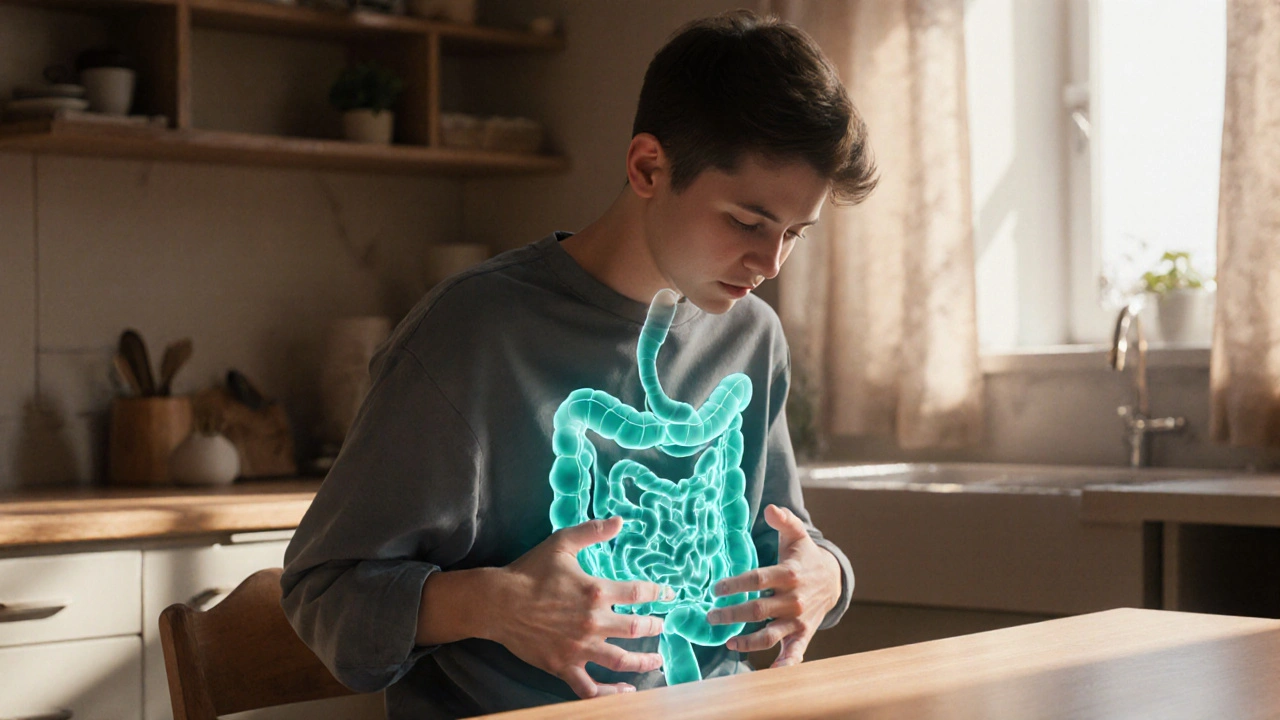
IBS Symptom Checker
Answer the following questions to help determine if your symptoms might align with IBS and identify potential triggers.
Abdominal Pain
Do you experience cramp-like abdominal pain?Bowel Changes
Have you noticed changes in bowel habits?Pain Relief
Does your pain improve after a bowel movement?Other Symptoms
Do you have fever, vomiting, or blood in stool?Common IBS Triggers
TL;DR
- Stomach ache can be an early sign of irritable bowel syndrome (IBS) but not all aches mean IBS.
- IBS is diagnosed mainly by symptom patterns (Rome IV criteria) and by ruling out other conditions.
- Common triggers include high‑FODMAP foods, low fiber, stress, and gut‑microbiome imbalances.
- Management centers on diet tweaks (low‑FODMAP, more fiber), probiotics, stress‑relief techniques, and, when needed, medication.
- See a gastroenterologist if pain is severe, blood appears, weight drops, or symptoms persist beyond three months.
What is Irritable Bowel Syndrome?
When you first hear the term, you might picture a vague "stomach problem." In reality, Irritable Bowel Syndrome is a chronic functional disorder of the large intestine that causes a mix of abdominal pain, bloating, and altered bowel habits without any detectable structural damage. It affects roughly 10‑15% of adults worldwide, with a higher prevalence among women. The condition is not life‑threatening, but its impact on daily life can be significant, especially when stomach ache flares up unexpectedly.
How Stomach Ache Fits Into the IBS Picture
Stomach ache is a broad term for any discomfort felt in the abdominal area. In IBS, the pain is usually cramp‑like, comes on after eating, and improves after a bowel movement. However, not every stomach ache signals IBS; infections, ulcers, or gallstones can cause similar sensations. The key differences lie in the pattern and accompanying symptoms:
- IBS pain tends to be recurrent and linked to meals.
- IBS often includes changes in stool form (diarrhoea, constipation, or alternating both).
- Non‑IBS causes may present with fever, vomiting, or blood in stool.
Understanding these nuances helps you decide whether a simple lifestyle tweak might help or if professional evaluation is required.
Common Triggers That Turn a Normal Tummy Into an IBS Flare
Research shows that up to 70% of IBS sufferers report that certain foods or stressors worsen their symptoms. Below are the biggest culprits:
- FODMAPs (Fermentable Oligo‑, Di‑, Mono‑Saccharides And Polyols) - short‑chain carbs found in wheat, onions, garlic, apples, and beans that ferment in the gut, causing gas and bloating.
- Low dietary fiber - fiber helps regulate bowel movements; a lack can lead to constipation‑type IBS.
- Stress and anxiety - the gut‑brain axis means emotional tension can provoke muscle spasms and pain.
- Gut microbiome imbalance - an overgrowth of harmful bacteria or a shortage of beneficial strains can alter digestion.
- Probiotics (or lack thereof) - certain strains (e.g., Bifidobacterium infantis) have been shown to reduce abdominal pain, while others may have little effect.
Tracking your meals and stress levels in a simple journal often reveals personal patterns that you can address directly.
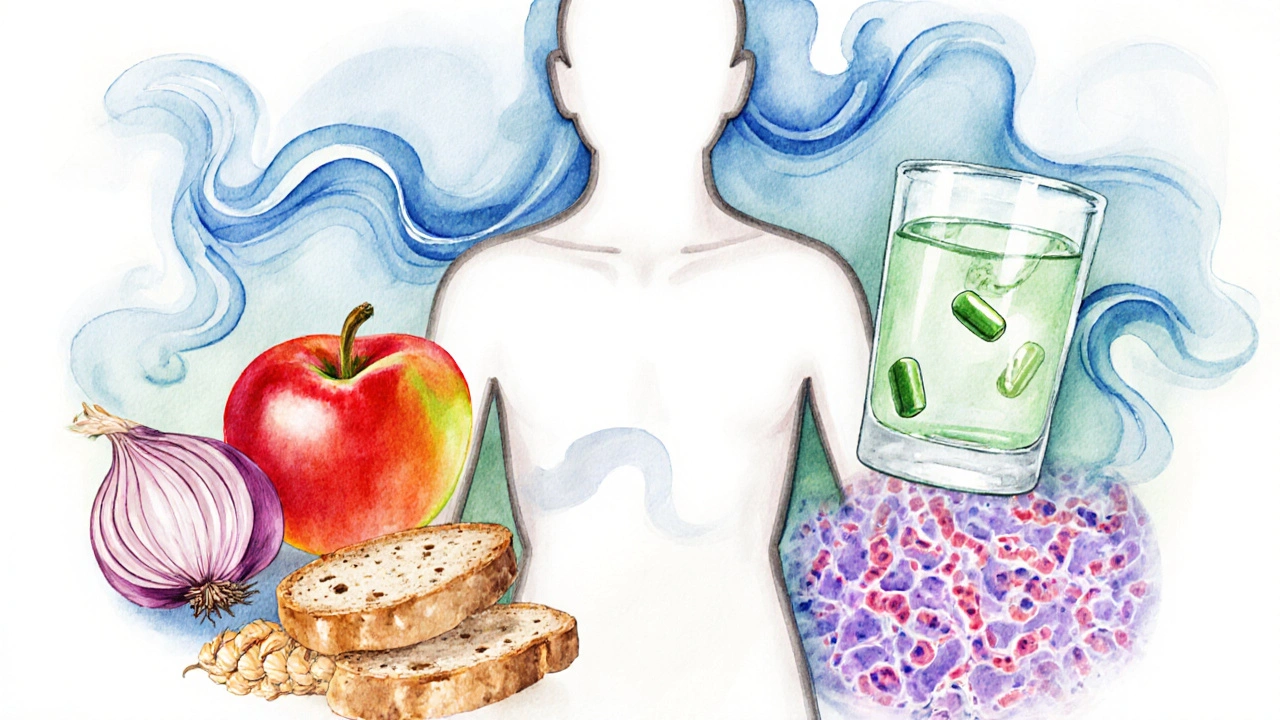
Diagnosing IBS: From Rome IV to Real‑World Tests
There is no single lab test that confirms IBS. Instead, doctors rely on criteria and exclusion:
- Rome IV criteria - a set of symptom‑based rules that require recurrent abdominal pain at least one day per week in the last three months, associated with two of the following: improvement with defecation, change in stool frequency, or change in stool form.
- Basic blood work to rule out anemia, inflammation, or thyroid issues.
- Stool tests to exclude infection or inflammatory bowel disease.
- In some cases, a colonoscopy is performed when red‑flag symptoms (blood, weight loss) are present.
The specialist you’ll likely see is a gastroenterologist, a doctor trained in diseases of the digestive tract. They’ll guide you through the appropriate tests and help spot any “danger signs” that merit deeper investigation.
Managing IBS‑Related Stomach Ache: Practical Steps
While there’s no cure, a combination of dietary changes, lifestyle tweaks, and targeted therapies can dramatically reduce pain.
- Low‑FODMAP trial: Work with a dietitian to eliminate high‑FODMAP foods for 4‑6 weeks, then re‑introduce them one at a time to identify personal triggers.
- Increase dietary fiber gradually (aim for 25‑30g/day) through soluble sources like oats, carrots, and psyllium.
- Incorporate probiotics that have evidence for IBS, such as Bifidobacterium infantis 35624, taken daily.
- Adopt stress‑reduction techniques: mindfulness meditation, yoga, or regular aerobic exercise (30minutes most days).
- If diet and lifestyle aren’t enough, medications may help:
- Antispasmodics (e.g., hyoscine) for cramp relief.
- Low‑dose antidepressants (tricyclics or SSRIs) to modulate gut‑brain signalling.
- Rifaximin for IBS with diarrhoea linked to bacterial overgrowth.
Keep a symptom diary alongside any changes you make; it provides concrete data for you and your doctor to fine‑tune the plan.
When to Seek Professional Help
Most people can manage mild IBS at home, but certain signs warrant a prompt appointment:
- Sudden weight loss (>5% of body weight) without trying.
- Visible blood in stool or black/tarry stools.
- Fever, persistent vomiting, or severe, worsening pain.
- Symptoms that persist beyond three months despite dietary and lifestyle attempts.
- New‑onset symptoms in someone over 50 years old.
Early evaluation helps rule out inflammatory bowel disease, colorectal cancer, or gallbladder problems-conditions that share overlapping pain patterns but require different treatment.
Quick Reference: IBS vs. Other Stomach‑Ache Causes
| Feature | IBS | Peptic Ulcer | Gallstones | Infection (Gastroenteritis) |
|---|---|---|---|---|
| Pain pattern | Cramp‑like, improves after defecation | Burning, worsens on empty stomach | Sharp right‑upper quadrant, after fatty meals | Diffuse, often with nausea/vomiting |
| Stool changes | Diarrhoea, constipation, or alternating | Usually normal | May be normal or oily stools | Frequent watery diarrhoea |
| Blood | Rare, only if severe hemorrhoids present | May see melena or haematemesis | Uncommon | Possible if invasive bacterial infection |
| Trigger foods | High‑FODMAP, stress, low fibre | Spicy/acidic foods, NSAIDs | Fatty meals, rapid weight loss | Contaminated food/water |
| Diagnostic tests | Rome IV criteria, exclusion tests | Upper endoscopy | Ultrasound, HIDA scan | Stool culture, PCR panels |
Putting It All Together: Your Action Plan
1. **Track**: Note each stomach ache, what you ate, stress level, and bowel movement. 2. **Try low‑FODMAP** for a month; re‑introduce foods to pinpoint triggers. 3. **Boost fibre** slowly-don’t jump from 10g to 30g overnight. 4. **Add a probiotic** with clinically‑studied strains; keep a 4‑week trial. 5. **Practice stress relief** daily; even 10minutes of deep breathing can help. 6. **Consult a gastroenterologist** if red‑flag symptoms appear or if self‑management fails.
Consistency is key; most people see noticeable improvement within 6‑8 weeks of disciplined changes.
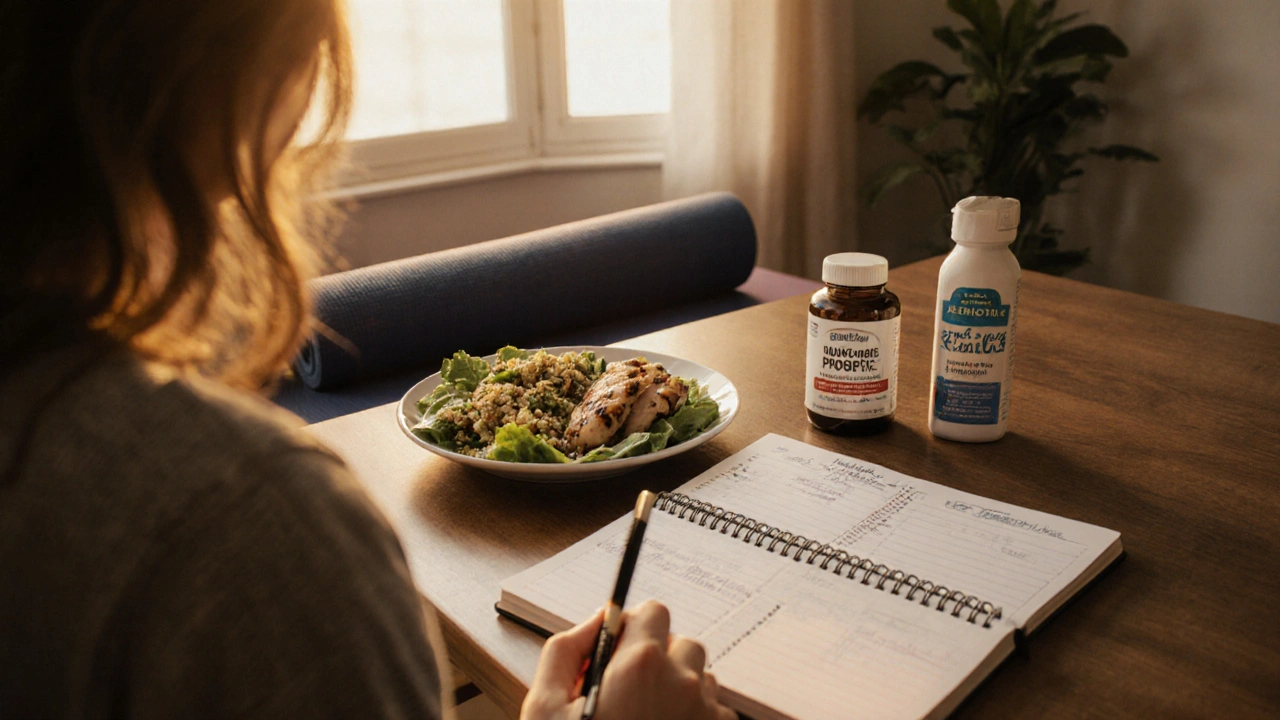
Frequently Asked Questions
Can IBS cause severe, constant pain?
IBS pain is usually intermittent and linked to meals or stress. Constant, severe pain is uncommon and should prompt a medical evaluation to rule out other conditions.
Is the low‑FODMAP diet permanent?
No. The diet starts as a strict elimination phase to identify triggers, then gradually re‑introduces foods. The goal is a personalized, less‑restrictive eating plan.
Do probiotics cure IBS?
Probiotics can reduce symptoms for many people, especially strains like Bifidobacterium infantis. They don’t cure IBS, but they can be a valuable part of a broader management strategy.
When should I get a colonoscopy?
If you experience alarm features-blood in stool, unintended weight loss, or symptoms after age 50-a colonoscopy is recommended to exclude inflammatory or malignant disease.
Can stress alone trigger IBS symptoms?
Yes. Stress activates the gut‑brain axis, leading to muscle spasms and heightened pain perception. Managing stress often leads to noticeable symptom relief.


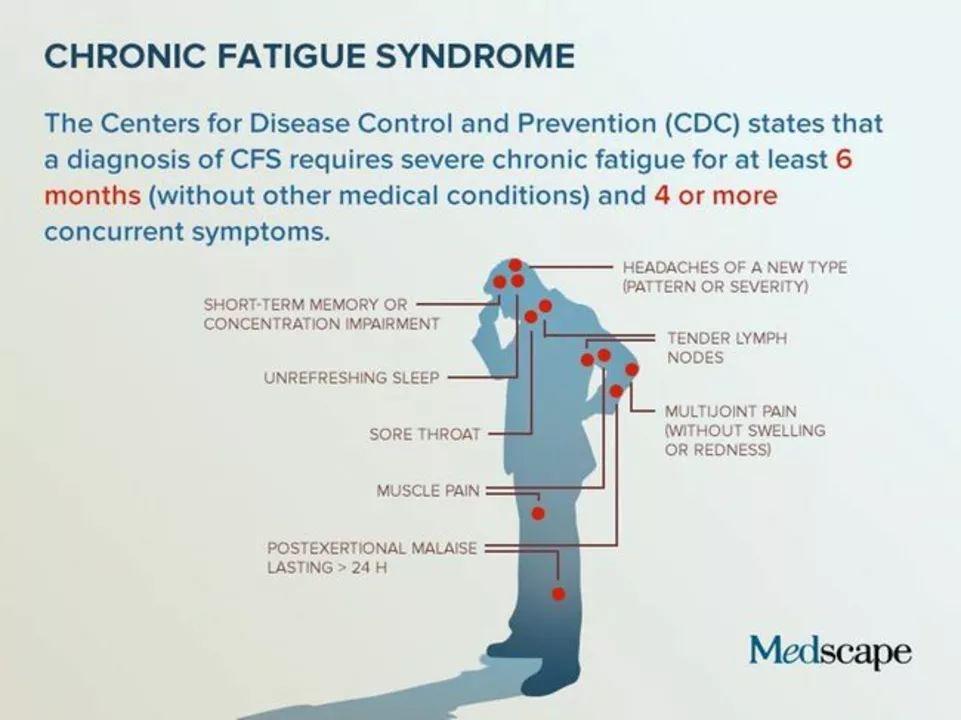


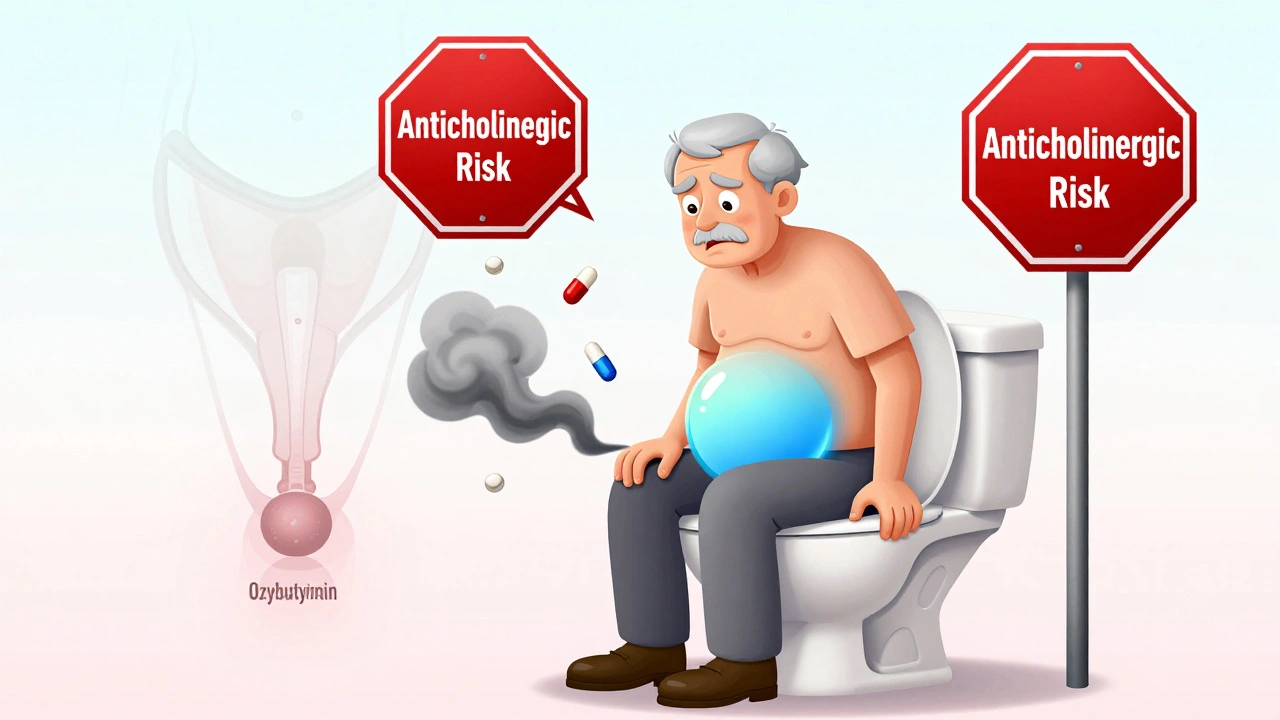
Ira Bliss
October 3, 2025 AT 06:52Hey everyone! 🎉 If you’re dealing with that cramp‑like belly pain, the low‑FODMAP trial is a game‑changer. Start by cutting out onions, garlic, wheat, and apples for a month, then re‑introduce them one at a time. Keep a simple notebook: what you ate, your stress level, and the vibe of your bowels. You’ll be amazed at how quickly patterns emerge. Remember, consistency beats intensity – a little bit every day wins the race!
Donny Bryant
October 4, 2025 AT 02:19Good overview. The Rome IV criteria really help differentiate IBS from other issues. If you notice blood or fever, see a doctor right away.
kuldeep jangra
October 4, 2025 AT 21:45Let me walk you through a step‑by‑step plan that many of my clients have found useful in taming that relentless stomach ache that often accompanies IBS. First, you want to establish a baseline by recording every meal, snack, and beverage, along with the exact time and your perceived stress level at that moment. Next, adopt a low‑FODMAP elimination diet for four to six weeks, which means saying goodbye to foods like wheat, beans, certain fruits, and dairy that ferment quickly in the gut. After the elimination phase, re‑introduce each food group one at a time, waiting three days between each introduction to observe any changes in pain, bloating, or bowel habits. Keep track of these observations in a simple spreadsheet; you’ll start seeing which triggers cause flare‑ups and which are harmless. Alongside diet, incorporate a gentle exercise routine – even a brisk 20‑minute walk after meals can stimulate motility and reduce cramping. Don’t underestimate the power of mindfulness; a daily 10‑minute meditation or deep‑breathing session can calm the gut‑brain axis, reducing stress‑induced spasms. If fiber is low, gradually add soluble sources like oats, carrots, and psyllium, but avoid a sudden surge that could worsen gas. Probiotics can be a helpful adjunct – look for clinically studied strains such as Bifidobacterium infantis 35624, taken consistently for at least a month. Should symptoms persist despite these measures, discuss prescription options with your gastroenterologist; antispasmodics, low‑dose tricyclic antidepressants, or rifaximin may be appropriate depending on whether diarrhea or constipation predominates. Finally, remember that IBS is a chronic condition; the goal is management, not a cure, so be patient with yourself and celebrate small victories along the way. Consistency, self‑monitoring, and a supportive healthcare team are the pillars that will keep you on the path to a calmer gut.
harry wheeler
October 5, 2025 AT 17:12Quick tip: don’t skip the fiber. Adding a bit of oats or psyllium each day can smooth things out without making things too gassy. Also, keep stress low – simple breathing exercises work.
faith long
October 6, 2025 AT 12:39Listen up! If you’re ignoring the red‑flag signs like blood, weight loss, or fever, you’re playing a dangerous game. Those symptoms aren’t “just IBS” – they scream something serious might be brewing. Get a proper work‑up, not just a Google search. Stop blaming yourself and start demanding proper tests. Your gut deserves thorough attention, not half‑ass DIY fixes. Act now before it gets worse!
Danny Wakefield
October 7, 2025 AT 08:05Alright, rumor has it that the pharma industry is quietly pushing “miracle” IBS pills while they keep the real cure hidden – the ancient fermented foods your ancestors ate. 😂 But seriously, if you feel like a lab rat in a trial, keep an eye on those “new” meds and always ask about side‑effects. The truth is out there, folks.
Samantha Dean
October 8, 2025 AT 03:32It is advisable to approach the management of irritable bowel syndrome with a methodical strategy, incorporating dietary modification, stress mitigation, and, where appropriate, pharmacologic intervention. Consultation with a qualified gastroenterologist is essential for accurate diagnosis.
Vanessa Peters
October 8, 2025 AT 22:59Wow, this post just blew my mind! 🌪️ The gut‑brain connection is like a secret super‑highway you never knew existed. Imagine hacking that highway with a low‑FODMAP diet and yoga – pure magic! 🙌
John Carruth
October 9, 2025 AT 18:25I’ve been battling IBS for years, and the biggest lesson I’ve learned is that patience and persistence are your best allies. Start with a food diary – write down every bite, every sip, and note how you feel each hour. Over weeks, patterns emerge, showing you which foods are friends and which are foes. When I cut out wheat and garlic, my cramping dropped dramatically within two weeks. Then I slowly added back one food at a time, waiting three days between each to gauge the impact. The low‑FODMAP diet can feel restrictive, but it’s a temporary experiment, not a permanent prison. Pair it with gentle exercise – yoga or walking after meals – to keep the bowels moving. Don’t forget the power of stress relief: even five minutes of deep breathing can calm the gut‑brain axis. If your symptoms persist, bring the data to your gastroenterologist; they can prescribe antispasmodics or low‑dose antidepressants that target gut motility. Remember, IBS is a marathon, not a sprint. Celebrate small victories, stay consistent, and you’ll find a rhythm that works for you.
Melodi Young
October 10, 2025 AT 13:52Nice rundown, but honestly, most people just need a quick fix – grab some peppermint tea and call it a day. 🙄
Tanna Dunlap
October 11, 2025 AT 09:19While the information is useful, it’s irresponsible to suggest that anyone can self‑diagnose IBS without professional guidance. The moral imperative is to encourage readers to seek proper medical evaluation before adopting any regimen.
Troy Freund
October 12, 2025 AT 04:45Cool stuff, man. Just remember, if you’re feeling the pain, a short walk and a chai latte can do wonders. Keep it chill.
Mauricio Banvard
October 13, 2025 AT 00:12Yo, the whole “low‑FODMAP” hype is just the latest diet fad cooked up by the food cartel. 🍕 Eat what you want, and the universe will sort you out – or not. Either way, it’s all a colorful conspiracy.
Paul Hughes
October 13, 2025 AT 19:39Totally agree.
Mary Latham
October 14, 2025 AT 15:05i think the post is awsm but u should prob add sum pics for visual learners lol.